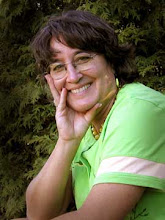September 8. Tim and Ryan wait for me at
We go to
It is cloudy here. The trail seems steeper than the killer one to
Up again, past Devil’s Dream camp, in the gloom (minimum impact, say the rangers, for their assignment of campsites.) I soon ascend into the mystery of fog and sunbeams until I reach Indian Henry’s.
There, in the meadows, the sun is hard and clean. Tahoma shows another facet, sharp, unrecognizable. The ranger cabin is positioned as the artist would have it, and the lady ranger cooks dinner on her porch. I tell her I want the most profoundly spiritual place to spend the night, and she directs me to the trail toward
The sun lowers and I stop at
A slight breeze is at my back; I have a feeling of being unprotected. From what? Animals, perhaps. The wind. My luck’s been too good; there’s surely a bear in this script. I move my sleeping bag into the conifers and still have a view of the moonlit mountain.
I wait for God to speak.
Yet I know I’ve already been spoken to. I know what I feel. God speaks in that “still, small voice.” I have come to trust it. And to trust the world, knowing much is beyond my control however much I wish to direct it, knowing bad things happen to good people, and good things happen more frequently than we give credit. I feel strong now.
This journey would have had a different outcome were it not for what Matthew Fox calls the via Negativa, the darkness, being emptied. “Facing the darkness, admitting the pain, allowing the pain to be pain, is never easy. This is why courage – big-heartedness – is the most essential virtue on the spiritual journey. But if we fail to let pain be pain, it will haunt us in nightmarish ways. We will become pain’s victims instead of the healers we might become.”
More: “Pain helps us understand other people in pain. There is no way to let go of pain without first embracing it and loving it – not as pain but as a sister and brother…. Liberation, he says, “begins at the point where pain is acknowledged and allowed to be pain.”
The noises of the night are magnified when one sleeps alone. The whistle of air through nostrils, the rub of eyelashes on nylon, the rustle of the sleeping bag as shoulders move with breathing. These noises are a bear in the underbrush. My heartbeat is a herd of elk.


No comments:
Post a Comment